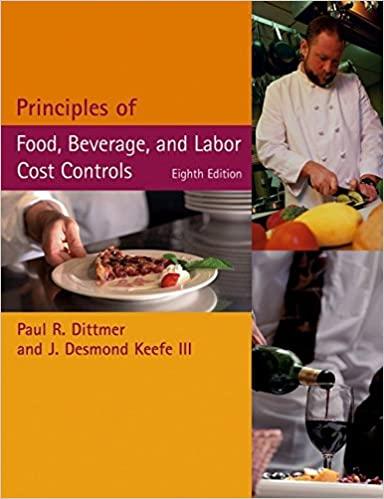Answered step by step
Verified Expert Solution
Question
1 Approved Answer
Benoit Chemical Company ( BCC ) produces a variety of specialty chemicals used in the pharmaceutical industry and construction industry BCC spends almost 2 0
Benoit Chemical Company BCC produces a variety of specialty chemicals used in the pharmaceutical industry and construction industry BCC spends almost of its net revenues on research, product development, and customer development to achieve its reputation as a highquality producer of chemicals, a reliable supplier, and a great provider of customer service. BCC has a small number of large customers, each of which typically has one or more large orders being processed at BCC at any given point in time. These orders are typically completed over to months or longer. BCC uses job costing to keep track of total job costs over the duration of each order and process costing to keep track of monthly costs, department by department. The processing departments include mixing, reacting in which chemicals are heated and sometimes vacuum is applied cleaning, inspecting, and packaging. Much of the total product cost is accumulated in the first two processes, mixing and reacting. The following information is for activity and costs in the first two departments during the current month. The mixing department started gallons this month. No spoilage is measured in the mixing department, but a careful measurement of the loss of material in reacting is taken after the completion of the reacting process. No materials are added in the reacting process. The number of gallons lost spoilage is considered normal spoilage and none of the costs of the spoiled units can be recovered. BCC uses the weightedaverage method for process costing. Percentage completion for conversion costs is in the mixing department for both beginning and ending inventory. The percentage completion for conversion costs for the reacting department for beginning and ending inventory is and respectively. WorkinProcess for the two departments is as follows. tabletableMixingDepartmentgallonstableReactingDepartmentgallonsBeginning workinprocess units,Ending workinprocess units,Normal spoilage lost gallons Costs in the mixing department: tableMaterials,ConversionBeginning workinprocess,$$ 
Benoit Chemical Company BCC produces a variety of specialty chemicals used in the pharmaceutical industry and construction industry BCC spends almost of its net revenues on research, product development, and customer development to achieve its reputation as a highquality producer of chemicals, a reliable supplier, and a great provider of customer service. BCC has a small number of large customers, each of which typically has one or more large orders being processed at BCC at any given point in time. These orders are typically completed over to months or longer. BCC uses job costing to keep track of total job costs over the duration of each order and process costing to keep track of monthly costs, department by department. The processing departments include mixing, reacting in which chemicals are heated and sometimes vacuum is applied cleaning, inspecting, and packaging. Much of the total product cost is accumulated in the first two processes, mixing and reacting. The following information is for activity and costs in the first two departments during the current month.
The mixing department started gallons this month. No spoilage is measured in the mixing department, but a careful measurement of the loss of material in reacting is taken after the completion of the reacting process. No materials are added in the reacting process. The number of gallons lost spoilage is considered normal spoilage and none of the costs of the spoiled units can be recovered. BCC uses the weightedaverage method for process costing.
Percentage completion for conversion costs is in the mixing department for both beginning and ending inventory. The percentage completion for conversion costs for the reacting department for beginning and ending inventory is and respectively.
WorkinProcess for the two departments is as follows.
tabletableMixingDepartmentgallonstableReactingDepartmentgallonsBeginning workinprocess units,Ending workinprocess units,Normal spoilage lost gallons
Costs in the mixing department:
tableMaterials,ConversionBeginning workinprocess,$$
Step by Step Solution
There are 3 Steps involved in it
Step: 1

Get Instant Access to Expert-Tailored Solutions
See step-by-step solutions with expert insights and AI powered tools for academic success
Step: 2

Step: 3

Ace Your Homework with AI
Get the answers you need in no time with our AI-driven, step-by-step assistance
Get Started


